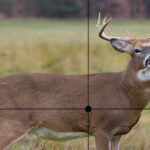Maurice Sendak’s Where the Wild Things Are, published in 1963, is more than just a children’s book; it’s a cultural phenomenon. Awarded the Caldecott Medal, the highest honor for picture books in the USA, its impact on children’s literature and American culture is undeniable. Consider this: President Barack Obama, throughout his presidency, annually chose Where the Wild Things Are to read to children at the White House Easter Egg Roll, highlighting its enduring appeal even amidst a wealth of new children’s books. This book’s significance transcends generations.
Maurice Sendak, author of Where the Wild Things Are, a celebrated children’s picture book.
With over 19 million copies sold globally and translations into over 40 languages, Where the Wild Things Are resonates universally. Sendak himself famously stated, “I don’t write for children. I write, and somebody says ‘it’s for children.’” Yet, in his Caldecott acceptance speech in 1964, he declared, “Where the Wild Things Are wasn’t meant to please everyone. Only children.” This duality reflects the book’s complex nature, appealing to children while sparking debate and analysis among adults.
Let’s delve into what makes this picture book a masterpiece, exploring its narrative, illustrations, and lasting legacy.
Unpacking the Opening Pages: Tantrum and Restraint
The book begins with Max, the protagonist, in the midst of chaotic activity. The very first spread sets the stage: violence and disruption are immediately present. Max, with a visible scowl, is depicted hammering a hole into the wall, while a teddy bear hangs precariously from a coat hanger.
First page spread of “Where the Wild Things Are” showing Max creating mischief in his home.
The layout is traditional for a picture book: text on the left page and illustration on the right. This formal structure creates an intriguing contrast with the raw emotion conveyed in the image. The negative space, the white expanse surrounding the illustration, is significant. It visually confines Max, emphasizing his feelings of being restricted and possibly misunderstood. This deliberate use of white space in the initial pages is crucial to understanding Max’s emotional state. He is contained, both literally within the page and metaphorically within his home environment. This feeling of constraint builds tension and anticipation right from the start.
Moving to the next spread, we see Max in motion, chasing a dog with a fork. The white space around the illustration diminishes slightly, giving the image more room to breathe and reflecting the escalating action.
Second page spread of “Where the Wild Things Are” depicting Max in further acts of playful rebellion.
The shrinking white space is a visual cue that Max’s wildness is expanding, mirroring his emotional release. The direction Max is running, facing away from the previous page’s direction, cleverly suggests a chaotic crisscrossing through the house, amplifying the sense of unbridled energy and mischief. Notably, the dog being chased bears a resemblance to Jennie, Maurice Sendak’s own dog, adding a personal touch to the illustration.
The Unseen Conflict and Max’s Room: Setting the Stage for Fantasy
The subsequent spread marks a significant shift, achieved through omission. We jump directly to Max in his room, already declared a “WILD THING!” and sent to bed without supper. A crucial moment – the confrontation with his mother – occurs off-page, implied but not shown.
Max confined to his room after misbehaving, setting the scene for his imaginative journey.
This deliberate omission is a powerful storytelling technique in picture books. As Sendak himself explained, picture books rely on a “dance between text and image,” where “Words are left out — but the picture says it. Pictures are left out, but the word says it.” Here, the text informs us of the outburst and punishment, while the illustration focuses on the aftermath and Max’s solitary confinement. The capitalized “WILD THING!” is the only instance of such emphasis in the book, underscoring the intensity of the conflict.
The depiction of Max’s room is revealing. It appears sterile and uninviting, “dry and boring and cramped,” unlike what one might expect for a child as imaginative and energetic as Max. This starkness hints at a potential disconnect in his home environment, perhaps a lack of understanding or space for his vibrant personality. It subtly suggests that the room is not a space curated by or for Max, further fueling the sense of confinement and prompting the reader to understand why “this kid is about to grow a forest in here.”
Maurice Sendak’s own studio, filled with toys and creative inspiration, contrasting with Max’s room in the book.
The Forest and the Journey: Escapism and Visual Expansion
And grow a forest it does. As Max’s imagination takes over, a forest begins to sprout in his room, visually represented by the illustrations expanding to “full bleed,” eliminating all white space.
Max’s room transforming into a forest, illustration expanding to fill the page.
The illustrations then break the “gutter,” the center fold of the book, further emphasizing the overwhelming growth of Max’s fantasy world and the pictures literally invading the space of the words. This visual technique symbolizes the dominance of Max’s imagination over reality and the narrative.
Illustration of the forest growing beyond the page boundaries, symbolizing Max’s expanding imagination.
The forest illustration crossing the gutter, visually immersing the reader in Max’s fantasy world.
Sendak’s artistic choice to depict this world as spatially shallow, almost stage-like, reinforces its fantastical nature. It’s not meant to be a realistic depiction but rather a representation of Max’s internal emotional landscape. Time itself becomes distorted as Max sails “through night and day and in and out of weeks and almost over a year . . . to where the wild things are.” This journey, compressed in text but expansive in imagination, highlights the subjective experience of time, especially for children.
Max sailing to the land “where the wild things are,” embarking on his imaginative adventure.
The arrival “where the wild things are” marks another design shift. The illustrations become full-bleed across the entire spread, with the text now confined to a white bar at the bottom. This visual dominance of the illustrations emphasizes the immersive experience of Max’s fantasy world.
The Rumpus and the Turning Point: Confronting and Releasing Emotions
Upon arrival, Max is declared “king of all wild things,” and the illustrations grow even larger, the white text bar shrinking further. This culminates in the iconic line: “‘And now,’ cried Max, ‘let the wild rumpus start.'” What follows are three wordless, full-bleed double-page spreads depicting the wild rumpus.
Max arriving in the land of the Wild Things, greeted by the fantastical creatures.
A “wordless spread” depicting the wild rumpus, full of energy and chaotic movement.
These wordless spreads are a stroke of genius. Words would be inadequate to capture the sheer energy and release of the rumpus. The absence of text amplifies the experience, making it visceral and immersive. It’s pure, unadulterated emotional expression through illustration.
Suddenly, the rumpus ends, and words return. Max, in a moment of role reversal, sends the wild things to bed before his supper, mirroring his mother’s actions. He then decides to return home. The reason for Max’s change of heart is not explicitly stated, only that he is “lonely.”
Max pausing the rumpus, a shift in his emotional state suggesting a desire for home.
The illustration on this spread is particularly nuanced. Max’s expression is no longer exaggerated or cartoonish. It’s more subdued, almost adult-like, conveying a complex mix of emotions – perhaps disappointment, boredom, or even regret. This is where “words are left out—but the picture says it.” The ambiguity of Max’s feelings in this moment is a key strength of the book, allowing readers to project their own interpretations and emotions onto the scene. It’s a turning point where Max seems to mature, recognizing a deeper need beyond wild abandon.
A close-up of Max’s face, showing a nuanced and thoughtful expression, marking a shift in his emotional journey.
The Return Home and Lasting Warmth: Ambiguity and Grace
As Max prepares to leave, the wild things, according to the text, are sad. However, the illustration is ambiguous. They appear to be reverting to their wild behavior, almost oblivious to Max’s departure. This discrepancy creates another layer of complexity, prompting readers to question the depth of connection in this fantasy world and the true nature of Max’s experience.
Max departing from the Wild Things, their expressions and actions leaving room for interpretation.
The journey home mirrors the journey to the wild things, but in reverse. The illustrations shrink, white space reappears, and Max returns to “his very own room.” Back in his room, the layout reverts to the initial format – text on the left, illustration on the right – but now the illustration is full-bleed. Max’s “real” world has expanded to fill the page, suggesting a shift in his perception and perhaps a newfound sense of comfort and security in his own space.
Max back in his room, the illustration full bleed, suggesting his world has expanded in a comforting way.
A subtle detail, the phase of the moon visible outside Max’s window, is particularly intriguing. It’s a full moon upon his return, different from the moon phase when he left. This detail injects ambiguity into the narrative. Did time truly pass in the real world while Max was in his fantasy? Or is it a symbolic representation of a longer emotional journey compressed into a short timeframe? This deliberate contradiction, the blend of real and unreal, is a hallmark of Sendak’s genius.
The final spread is perhaps the most powerful and poignant. The text reads, “he found his supper waiting for him,” followed by a page turn to just five words: “and it was still hot.” This page is entirely text-based, with no illustration.
The final page of “Where the Wild Things Are” with only text, emphasizing the warmth and love awaiting Max.
This absence of illustration is incredibly evocative. It brings the unseen mother into focus. Throughout the book, she is present only through implication, but this final page suggests her quiet, unwavering presence and care. The hot supper is a powerful symbol of forgiveness, unconditional love, and the comforting return to the real world.
A State of Grace: Enduring Legacy of Where the Wild Things Are
Crucially, Max never apologizes. There is no explicit moral lesson, no demand for repentance to earn love. Where the Wild Things Are broke ground by portraying a child’s complex emotions without judgment and suggesting that love and acceptance are not conditional on perfect behavior.
The book’s ending establishes “a state of grace,” a sense of peace and reconciliation without explicit resolution. It acknowledges the validity of children’s anger, imagination, and emotional journeys. Where the Wild Things Are remains a timeless masterpiece because of its honest portrayal of childhood emotions, its innovative use of illustration and narrative, and its enduring message of unconditional love. It’s a book that continues to resonate with readers of all ages, prompting reflection on childhood, parenting, and the wildness within us all.
Final illustration of Max in his room, bathed in soft light, suggesting peace and comfort.


